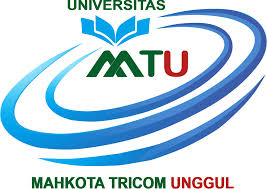The Analysis of Students’ Difficulties in Using Computer Terms
DOI:
https://doi.org/10.55927/fjst.v2i2.3154Keywords:
Students’ Difficulties, Computer TermsAbstract
Computer is used for many purposes especially for improving and supporting in education system. Students can operate computer as well as possible, but most of them don’t know the meaning of some terms in computer science. The aims of this study are to investigate the Students’ difficulties in Using Computer Science Terms at STMIK Pelita Nusantara, then to explore the students’ difficulties in Using Computer Science Terms at STMIK Pelita Nusantara. This is a qualitative research. The participants of this study were students of second semester of STMIK Pelita Nusantara. The total of students were 35 students that consist of 17 males and 18 females. The result showed that computer terminology is the one problem that the students face. The lack of vocabulary become the main reason why the students cannot use the terms well. Students’ obstacles were not only in mastering vocabulary but also in mastering the translation in using computer terms. Sometimes the students know the usage of computer terms but they don’t know the meaning of them.
Downloads
References
Azhar, K. A., & Iqbal, N. (2018). Effectiveness of Google classroom: Teachers’ perceptions. Prizren Social Science Journal, 2(2), 52-66.
Banditvilai, C., & Cullen, R. (2018). Problems and Obstacles in Learning English as a Foreign Language. International Journal of Social Science and Human- ity, 8(12).
Brown. H. Doughlas. (1987). Principles of Language Learning and Teaching While Plaints (New York: Longman).
Cakrawati, L. M. (2017). Students’ Perceptions on the Use of Online Learning Platform in EFL Classroom. English Language Teaching and Technology Journal, 1(1), 22-30
Creswell, John W. (1998). Research Design Pendekatan Kualitatif, Kuantitaif, and mixed. Yogyakarta: Pustaka Belajar
Elyas, T., & Al Grigri, W. H. (2014). Obstacles to Teaching English in Saudi Arabia Public Schools: Teachers’ and Supervisors’ Perceptions. Interna- tional Journal of English Language Teaching, 2(3(, 74-89
Hornby. (1978). Oxford advanced learners’. Dictionary of Current English, USA: Oxford University.
Huda, A. (2020). Improving Students’ Reading Comprehension Through SVO (Subject Verb Object) Mapping Strategy (A Classroom Action Research) at Tenth Grade Students in SMKN 1 Kemlagi. Language-Edu, 9(1).
Iftakhar, S. (2016). Google classroom: What Works and How. Journal of Educa- tion and Social Sciences, 3(1), 12-18.
Islam, M. S. (2019). Bangladeshi University Students’ Perception about Using Google Classroom for Teaching English. Psycho-Educational Research Re- views, 57-65.
Kharisma, S. I. (2019). The Students’ Obstacles in Identify Narrative and De- scriptive Text (Doctoral dissertation, UIN Ar-Raniry Banda Aceh).
Larasati, D. (2019). An Analysis of Difficulties in Comprehending English Read- ing Text at the Eleventh Grade Students of MA LAB UIN-SU Medan (Doc- toral dissertation, Universitas Islam Negeri Sumatera Utara).
Lincoln, Yvonna S & Egon G. Guba. (1985). Naturalistic Inquiry. California: Sage.
J. Moleong, Lexy. (2014). Metode Penelitian Kualitatif. PT Remaja Rosdalarya, Bandung.
Miles, Matthew B and Huberman, A Michael. (1994). Qualitative Data Analysis, California: SAGE Publication.
Muslimah, A. (2018). A Survey on the Use of Google Classroom in English Lan- guage Education Department of Islamic University of Indonesia.
Ntreke, B.B., & Ramokora, B. T. (2017). Reading competency of first-year un- dergraduate students at University of Botswana: A case study. Reading & Writing. 8(1), 1-11.
Nuttal, C. (1982). Teaching Reading Skill in A Foreign Language. London: British Library Cataloguing in Publication Data.
Pang, E. S., Muaka, A., Bernhardt, E. B., & Kamil, M. L. (2003). Teaching read- ing (Vol. 12). Brussels, Belgium: International Academy of Education.
Raco, J. R. (2010). Metode penelitian kualitatif. Gramedia Widiasarana Indonesia.
Saiful, S., Jabu, B., & Atmowardoyo, H. (2019). The Effects of the PORPE Meth- od on Students’ Reading Comprehension and Metacognitive Aware- ness. Journal of Language Teaching and Research, 10(3), 569-582.
Schuemann, K. B. (2014). A Phenomenological Study Into How Students Experi- ence and Understand the University Presidency.
Setyawan, H. (2019). Blended Method: Online-Offline Teaching And Learning, On Students’ Reading Achievement. English Education: Jurnal Tadris Baha- sa Inggris, 12(1), 22-33.
Siburian, T . A. (2013). Improving Students’ Achievement on Writing Descriptive Text through Think Pair Share. International Journal of Language Learning and Applied Linguistics World (IJLLALW), (3), 3, 33-35
Snow, C. (2002). Reading for understanding: Toward an R&D program in read- ing comprehension. Rand Corporation.
Sekarini, A. (2017). An Analysis of Students’ Reading Comprehension Contraints at the First Year Students of SMAN 1 Bandar Lampung.
Zidat, S., & Djoudi, M. Effect of an Online Learning on EFL University Students’ English Reading Comprehension.
Downloads
Published
How to Cite
Issue
Section
License
Copyright (c) 2023 Ika Swantika, Refin Harissandi, Rossya Diva Anwar

This work is licensed under a Creative Commons Attribution 4.0 International License.












.png)


















